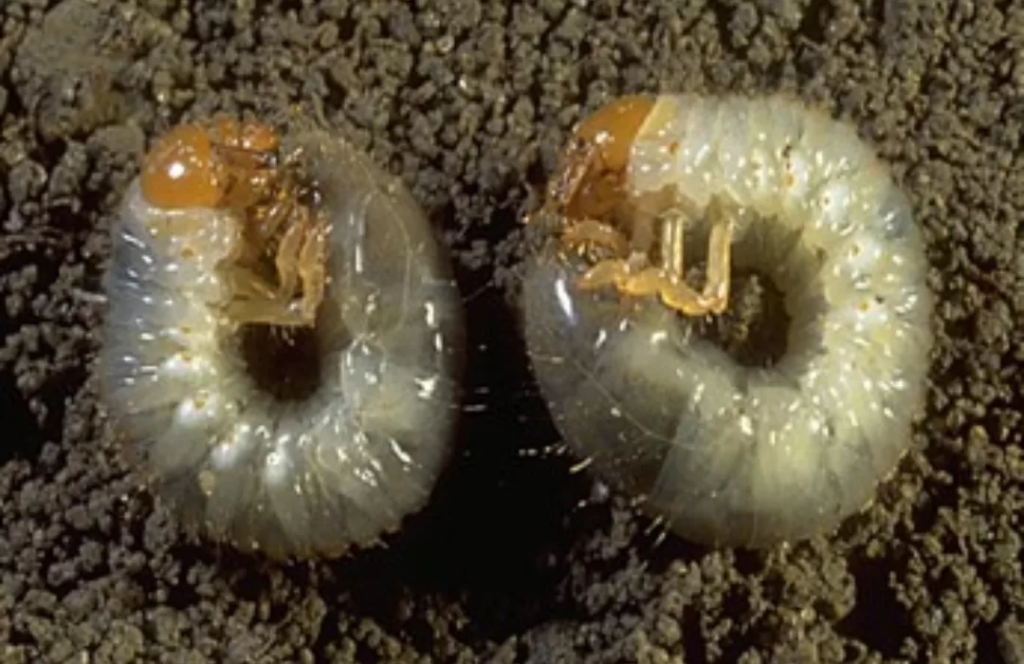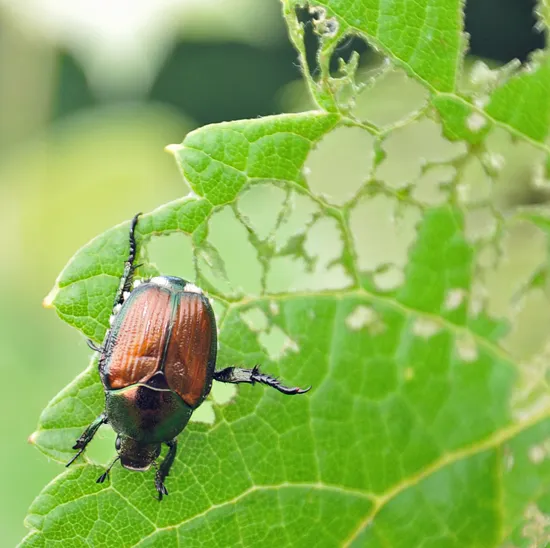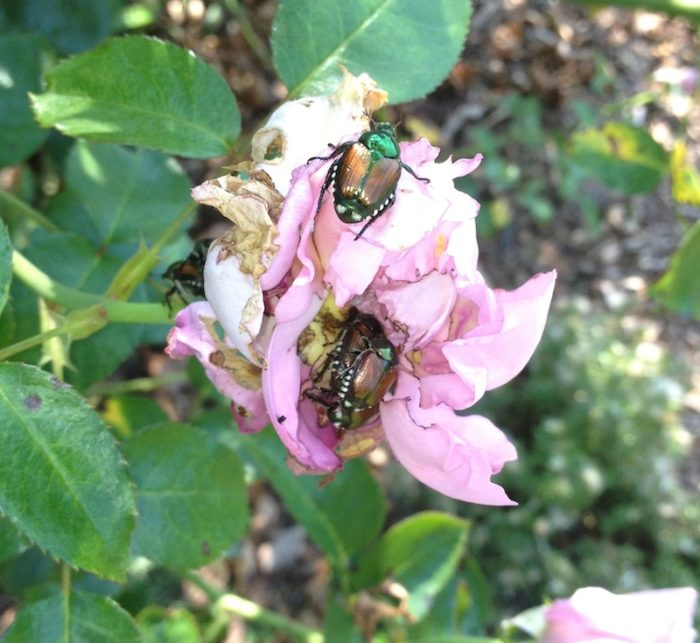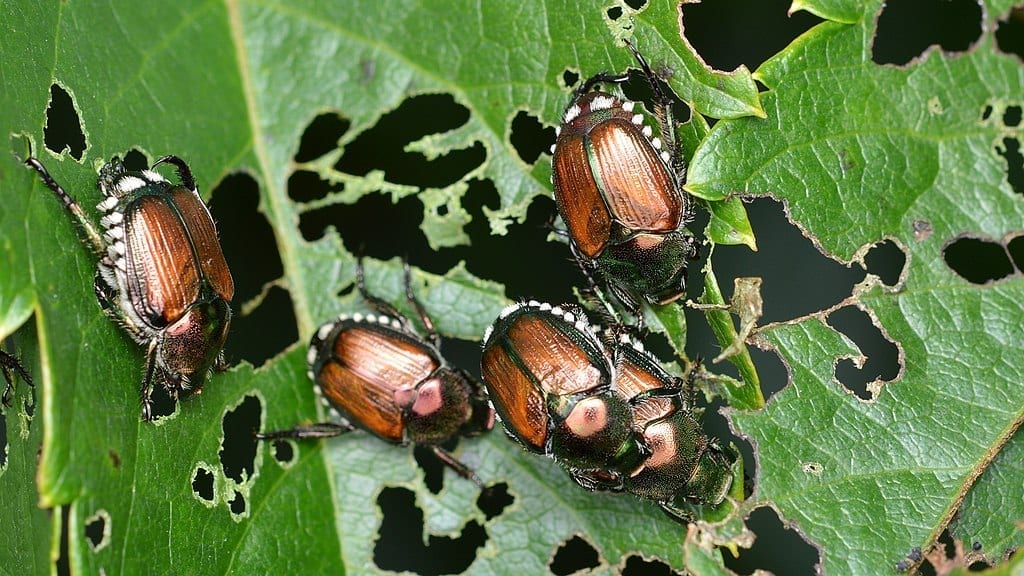Since their accidental introduction to New Jersey in 1916, Japanese beetles have spread throughout North America, from Ontario in the north to Alabama and Georgia in the south, and from Colorado to Oregon in the west. These invasive insects are notorious for their destructive feeding habits, especially during their six-week summer feeding period. The risk of damage to plants generally occurs between mid-June and early August, when beetles are most active.
Japanese beetles are a serious threat to over 300 plant species, including ornamental trees like lindens, crabapples, and Japanese maples, as well as garden favorites such as beans, corn, grapes, roses, hollyhocks, hibiscus, and zinnias. Unfortunately, they have few natural predators in North America, making them particularly challenging to control.
Lifecycle and Vulnerabilities
Japanese beetles spend most of the year as larvae (also called white grubs) in the soil, feeding on grass roots. In the fall, hot, dry weather can damage eggs and shallow-feeding larvae, while severe winter cold can also reduce their numbers, particularly when there’s no snow to insulate them.

Handpicking Beetles
One of the most effective and organic ways to manage Japanese beetles is to handpick them. This is easiest in the morning when the beetles are slow and covered in dew. Use a broad container like a bowl or cake pan filled with soapy water to drown the beetles after you collect them. You can also shake the beetles off plants, like Japanese maples, onto a sheet or tarp below and then dispose of them in soapy water. Tall, upright plants like pole beans and zinnias can make beetles easier to spot and remove, as they tend to congregate in high places.

Protecting Your Plants
Roses are particularly vulnerable to Japanese beetles, as they feed on the petals, which are rich in sugars. To protect your roses, cover them with tulle or fine mesh, securing it with clothespins. Additionally, planting flowers like hollyhocks, marigolds, and zinnias away from your vegetables can act as a “trap crop.” The beetles will be attracted to these flowers, allowing you to collect them before they damage your vegetables.

Organic Pesticides and Treatments
In more severe cases, organic gardeners can turn to plant-based pyrethrum-based pesticides or a specific strain of Bacillus thuringiensis known as galleriae. This natural bacterium, sold as BeetleJUS or BeetleGONE, can be an effective way to target beetles, as it kills them after ingestion. However, it’s important to avoid using systemic pesticides, as they can harm beneficial pollinators like bees.
Using Traps
While Japanese beetle traps can seem effective, they often attract more beetles than they capture, potentially making the infestation worse. If you use traps, position them downwind and as far away from your garden as possible. Multiple traps may be used along the perimeter of your property to intercept beetles approaching from infested areas nearby.
By combining strategies like handpicking, plant protection, trap crops, and selective pesticide use, organic gardeners can minimize the impact of Japanese beetles and protect their plants during the critical summer feeding season.
